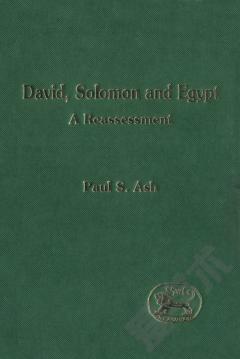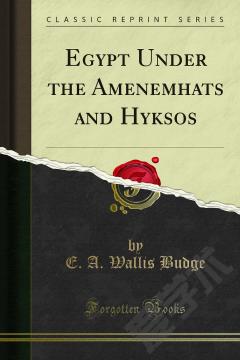David, Solomon and Egypt —— A Reassessment
----- 大卫所罗门埃及
David, Solomon and Egypt: A Reassessment, by Paul S. Ash. JSOTSup 297. Sheffield: Sheffield Academic Press, 1999. Pp. 157. N.P. Scholars who have the ability to engage in comparative analysis and have a command of the primary and secondary sources of the diverse fields of ancient Egypt and Israel are rare indeed. Paul Ash's work, which is a revision of his doctoral dissertation, shows the ability to work with the textual and archaeological materials from both cultures, as well as to engage in historical critical analysis. He has written a very detailed and thorough analysis of the subject, which is copiously documented. His goal is to reassess the notion proposed by R. de Vaux ("Titres et fonctionnaires egyptiens A la tour de David et de Salomon," RB 48 [1942]: 394-402), A. Cody ("Le titre egyptien et le nom propre du scribe de David," RB 72 [1965]: 381-93), and others that David and Solomon had Egyptian officials at their court. Thus, his topic of study is the interaction (or lack thereof, according to Ash) of Egypt and Israel during the time of David and Solomon. He reassesses the traditional idea that there were significant contacts, and argues that the dearth of written sources from Egypt, the lack of Egyptian materials in the archaeological data from Palestine, and the lack of clarity in the biblical sources attest to scattered contact between Egypt and Israel. He does, however, allow for the possibility of the existence of the United Monarchy, although epigraphic evidence for this period is scanty, which Ash believes creates doubt about the degree of literacy during the period of David and Solomon. The work is divided into three major sections-a discussion of the relevant inscriptional sources from Egypt, the archaeological evidence from Palestine, and the biblical evidence. A critical examination, according to Ash, shows that the contacts between the two areas were limited, and that the biblical traditions concerning Solomon and Egypt are not historically reliable. Ash's pessimism concerning the historical and archaeological value of his sources is evident from the outset. He begins by showing that one cannot, with any precision, establish a reliable chronological synchronism between Egyptian monarchs of the Twenty-first Dynasty and the reigns of David and Solomon. However, he concedes that the presence of specific details in 1 Kgs 14:25-28 shows that the writer had access to historical material. In spite of this, it is impossible to conclude which Egyptian monarch ruled concurrently with David and Solomon, although Shoshenq I and Rehoboam ruled somewhat concurrently. Just as frustrating as the lack of establishing a chronological sequence is the lack of Egyptian texts and reliefs that may illuminate contacts, The Siamun relief from Tanis has traditionally been viewed as showing his campaign in Palestine. Like others, Ash argues in a very detailed way that Siamun's "Battle Relief ' has nothing to do with a campaign in Palestine. Furthermore, the text is probably a fictitious account as well, and thus has no historical value. Papyrus Moscow 127 has been seen by K. Kitchen as showing evidence for contact between Egypt and Edom during the time of David. Once again Ash dispels this by showing that the chronological context for the letter is uncertain, as well as its historicity. Thus, it should be used with caution and only in conjunction with other, better evidence. â¦
{{comment.content}}








 京公网安备 11010802027623号
京公网安备 11010802027623号